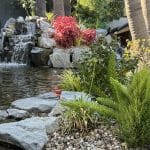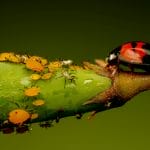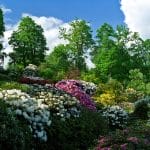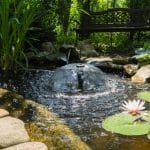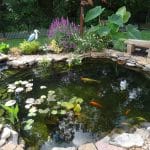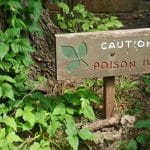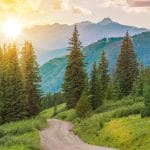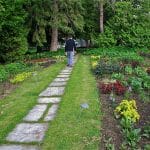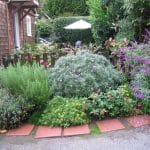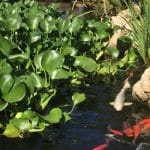Pine Trees: From Garden Companions to Forest Giants
Trees & Shrubs
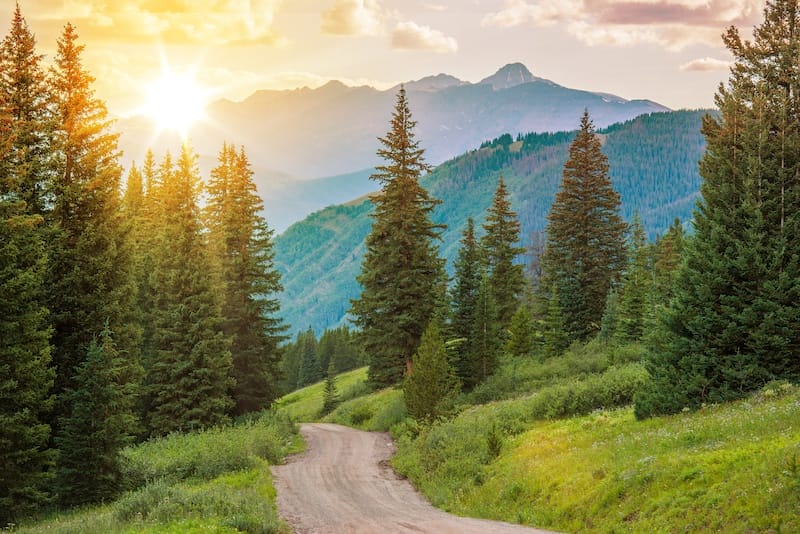
If you’ve ever leaned close to a Jeffrey pine on a hot day, you know the surprise bark that smells like vanilla or butterscotch. I still remember the first time I caught it, and I thought, well, isn’t that a neat trick from a tree that looks so ordinary at first glance.
The truth is, pines aren’t ordinary at all. They’ve been feeding people, building homes, shading towns, and marking trails for thousands of years. And for a gardener? They can be both a practical friend and a showstopper.
How Many Types of Pine Trees Are Out There?
If you’ve ever thought, “A pine is a pine,” you’re in for a surprise. Botanists count about 120 species of pine trees worldwide. They’re all part of the genus Pinus, and they fall into two broad groups:
- Soft pines: Flexible needles, usually in bundles of five. White pines and sugar pines are in this camp.
- Hard pines: Needles tougher and fewer — two or three in a bundle. Think Ponderosa, loblolly, and Scots pine.
That little needle-count trick is half the battle in identifying them.
Where Do Pines Grow Best?
Pines are true Northern Hemisphere trees. They stretch across Canada and Russia, hug the Mediterranean coast, cling to desert mountains, and stand tall on the slopes of the Sierra Nevada. What they all have in common is this: they want sun and well-drained soil.
Shade is a dealbreaker for most species. A seedling might tolerate it, but grown pines crave the open sky.
How to Spot a Pine Tree by Needles
Here’s the neighborly shortcut: count the needles in a bundle (called a fascicle).
- Two needles per bundle: Scots pine, red pine.
- Three needles per bundle: Ponderosa, loblolly, longleaf.
- Five needles per bundle: Eastern white pine, sugar pine.
Once you’ve got the count, take a look at the cones. Sugar pine cones, for example, are comically long — sometimes more than a foot.
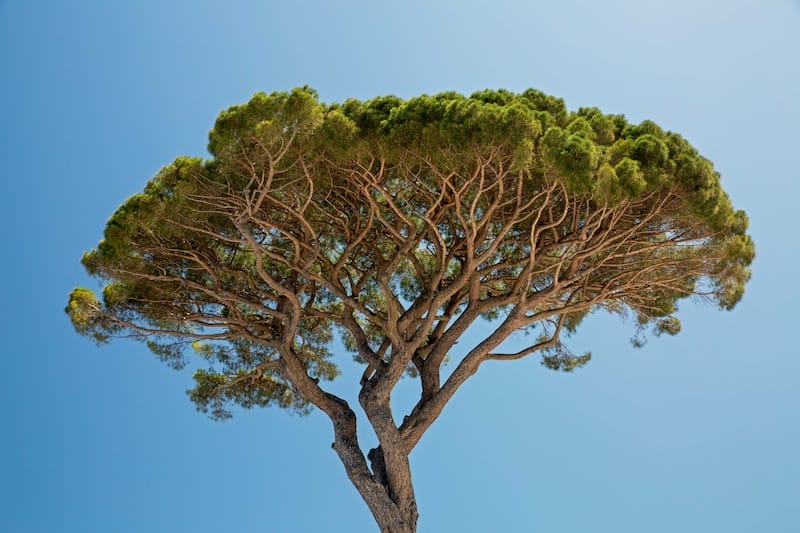
Stone Pine
Pines Worth Planting in the Garden
Not every pine belongs in a forest. Some are made for yards, streets, and parks:
- Stone pine (Pinus pinea): The “umbrella pine” of Italy. Beautiful, edible seeds (the real pine nuts).
- Austrian pine (P. nigra): Tolerates pollution and poor soil — a survivor.
- Japanese black pine (P. thunbergii): Rugged coastal tree, often shaped in bonsai.
- Mugo pine (P. mugo): Compact, almost shrubby, great for smaller gardens.
- Eastern white pine (P. strobus): Fast-growing, soft-needled, gentle presence.
And then there’s the Monterey pine (P. radiata). Drive through Carmel, California, and you’ll see them twisting against salt winds. They look battered but carry a kind of wild grace you can’t forget.
Famous Pines You Should Know
- Jeffrey pine — vanilla-scented bark in the Sierra Nevada.
- Sugar pine — the tallest of them all, with cones longer than your hand.
- Stone pine — shaping Mediterranean skylines for centuries.
- Monterey pine — coastal survivor, iconic near Carmel.
They’re trees with personality. Once you meet them, you don’t forget.
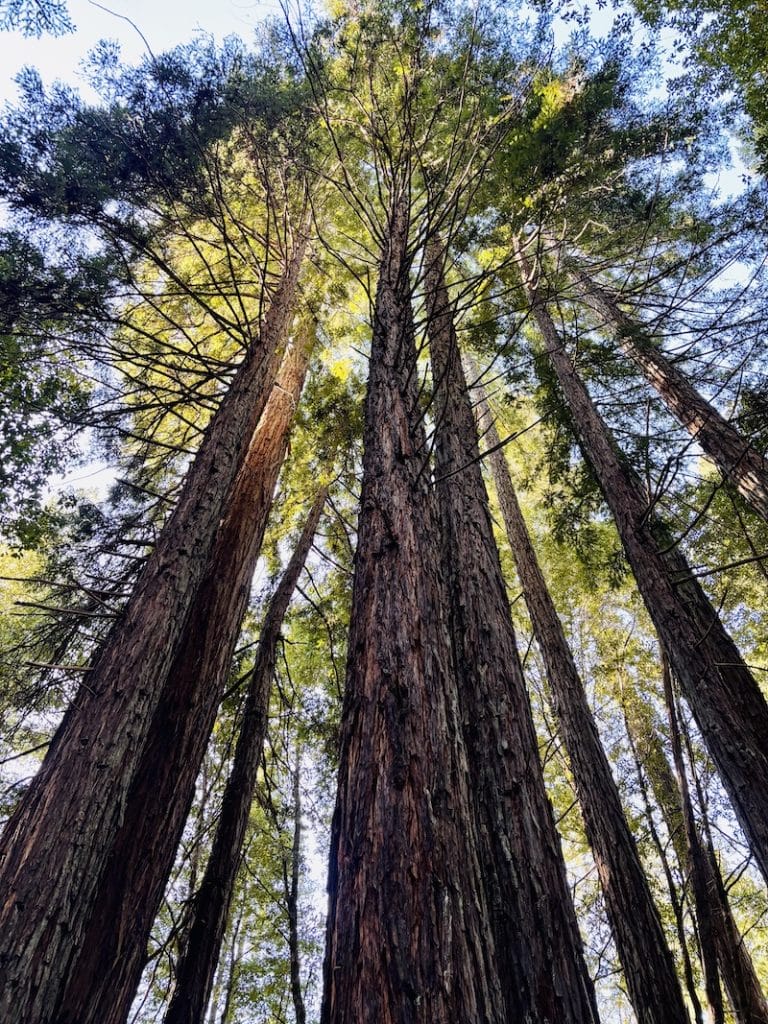
Quick Guide to Popular Pine Trees
Here’s a handy snapshot for gardeners.
| Common Name | Latin Name | Native Area | USDA Zones | Height | Sun Exposure |
|---|---|---|---|---|---|
| Eastern White Pine | Pinus strobus | Eastern North America | 3–8 | 50–80 ft (can top 150 ft in the wild) | Full sun |
| Ponderosa Pine | Pinus ponderosa | Western North America (Rockies, Sierra) | 3–7 | 60–100 ft | Full sun |
| Jeffrey Pine | Pinus jeffreyi | CA, NV & OR mountains | 5–8 | 80–130 ft | Full sun |
| Sugar Pine | Pinus lambertiana | Mountains of California & Oregon | 5–7 | 100–200 ft | Full sun |
| Monterey Pine | Pinus radiata | Coastal California (Monterey, Carmel) | 7–10 | 50–100 ft | Full sun |
| Stone Pine (Umbrella Pine) | Pinus pinea | Mediterranean region | 8–10 | 30–60 ft | Full sun |
| Austrian Pine | Pinus nigra | Central & Southern Europe | 4–7 | 50–60 ft | Full sun |
| Scots Pine | Pinus sylvestris | Europe & Asia | 3–7 | 30–60 ft | Full sun |
| Mugo Pine | Pinus mugo | Central Europe (Alps) | 2–7 | 5–20 ft (shrub to small tree) | Full sun |
| Pinyon Pine | Pinus edulis | Southwestern U.S. | 4–8 | 10–30 ft | Full sun |
Tip: when in doubt, count the needles in each bundle (fascicle) — it’s the fastest way to narrow down your ID.
What Do People Use Pines For?
Pines are more than just pretty:
- Lumber and Paper: Southern yellow pines dominate American construction and pulp. In the Pacific Northwest, lodgepole and ponderosa are sawmill staples. Radiata pine is grown worldwide in plantations.
- Food: Pine nuts from pinyon and stone pines are sweet, rich, and worth the effort. Indigenous people in the Southwest harvested them each fall — you can still see the old foot trails up from Palm Desert into the higher ranges.
- Resin and Pitch: Used for waterproofing, medicine, and turpentine.
- Culture: From Christmas trees to bonsai, pines keep sneaking into human celebrations.
Bark Beetles and Other Pine Problems
If your pine is sulking and you’re seeing odd sap blobs or sawdusty crumbs, take a breath and do a quick field check. Most bark beetles move fast, but you can move smarter.
Quick signs you’re dealing with bark beetles
- Needles fading: green → straw → reddish-brown (often the season after attack).
- Pitch tubes (resin blobs) on the trunk: cream to reddish “bubble gum” mixed with boring dust.
- Frass (sawdust-like) at bark crevices or trunk base.
- Entry holes: tiny, round. Peel a bit of bark on dying patches and look for galleries:
- Mountain pine beetle (MPB): vertical/J-shaped egg tunnels.
- Southern pine beetle (SPB): S-shaped galleries; crowns fade in tight “spots.”
- Blue-stained sapwood: dull blue/gray stain below bark — fungi carried by beetles that help overwhelm the tree.
Who’s who
- Mountain pine beetle (MPB): West; favors big lodgepole and ponderosa.
- Southern pine beetle (SPB): Southeast/East; one of the most destructive native pests.
- Ips “engraver” beetles: Often hit stressed or recently pruned pines.
What to do if you suspect beetles
- Confirm, don’t guess. Call your county extension or a certified arborist to check.
- Don’t move firewood. Many outbreaks spread from logs hauled across regions.
- If a tree is infested, Removal is usually the only option — chip or debark on site.
- If nearby trees are infested but yours aren’t yet: Preventive bark sprays (carbaryl, bifenthrin, permethrin) before beetle flight can protect valuable trees for a season.
No spray will “cure” an already infested tree. Healthy roots and water are your best defense.
Watering Pines by Season
Young pines need more care than old giants. Here’s a good rhythm:
- Spring/Summer: Deep soak every 2–4 weeks if there’s no rain. New trees may need weekly waterings their first year.
- Fall: Ease back — let them toughen up for winter.
- Winter: In snowless but dry regions, a good soak once a month helps.
The key is depth. Shallow, frequent watering encourages weak roots. Go deep, then let the soil rest.
Fertilizing and Protecting Pines
Pines aren’t hungry feeders, but they appreciate a little help.
- Fertilizer: A slow-release, balanced mix in spring is plenty. Skip heavy nitrogen — it creates soft, pest-prone growth.
- Mulch: A wide ring keeps roots cool and moist. Don’t pile it against the trunk.
- Pruning: Only remove what’s dead or diseased. Pines don’t rebound from hard pruning like some trees.
Think of it as guiding, not fussing. Pines do most of the work themselves.
Pine Nuts and Old Foot Trails
One of my favorite pine stories belongs to the pinyon pine. These small, tough trees grow in the high desert, right where the landscape shifts from scrub to mountain ( Near Anza California ). Their nuts are sweet and buttery. For centuries, Native people counted on them as a staple and make a great addition to a salad. The trails they carved to gather pine nuts every fall still wind through those hills. Next time you’re near Palm Desert, look up into the ranges and think about those paths.
Pines in the Pacific Northwest
Even though Douglas-fir (not a pine at all) dominates timber country, pines play a big role too.
- Ponderosa pine gives strong, straight lumber.
- Lodgepole pine grows fast, often used for pulp.
- Radiata pine is farmed in plantations for both wood and paper.
They’re workhorses, just as much as they are beauties.
Closing Thoughts
I like that dual nature of pines — useful and beautiful, steady and surprising. One moment you’re cracking open a pinyon nut, the next you’re standing under a sugar pine staring at a cone that looks like it came from another planet. Or maybe you’re just sitting in your yard, watching the soft sway of white pine needles while the rest of the garden settles down for winter.
That’s the gift of pine trees. They ask for sun, space, and a bit of water when they’re young. Give them that, and they’ll stand with you for decades.
They’re not just trees in the background. They’re companions you grow old with.
Pine Tree FAQ
How many types of pine trees are there?
Do pine trees grow fast?
Where do pine trees grow best?
Which pine has the biggest cones?
Are pine nuts edible from all pines?
How can I tell if my pine has beetles?
Do pines need much water?
Do I need to fertilize pine trees?
Why do some pine trees smell like vanilla?
Which pines are good for landscaping?
Share this post
Table of Contents
- How Many Types of Pine Trees Are Out There?
- Where Do Pines Grow Best?
- How to Spot a Pine Tree by Needles
- Pines Worth Planting in the Garden
- Famous Pines You Should Know
- Quick Guide to Popular Pine Trees
- What Do People Use Pines For?
- Bark Beetles and Other Pine Problems
- Quick signs you’re dealing with bark beetles
- Who’s who
- What to do if you suspect beetles
- Watering Pines by Season
- Fertilizing and Protecting Pines
- Pine Nuts and Old Foot Trails
- Pines in the Pacific Northwest
- Closing Thoughts
- Pine Tree FAQ
All categories
More From The Garden
Disclosure: This post may contain affiliate links. That means if you click and buy, The Bright Garden may earn a small commission, at no extra cost to you. We only recommend products we’ve vetted and believe will benefit our readers.


